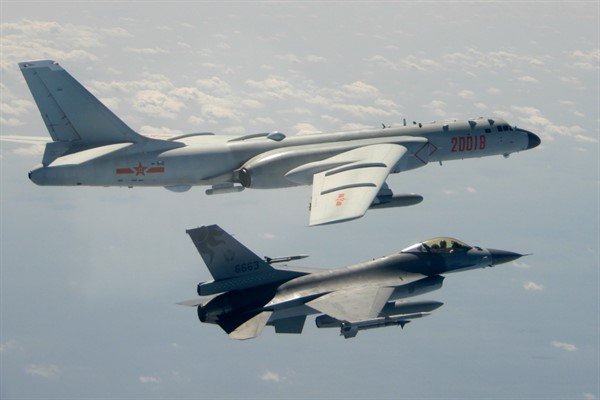Recent Chinese military maneuvers were a stark reminder that the Taiwan Strait remains one of the world’s most dangerous flash points. After months of saber-rattling near Taiwan, China’s air force sent dozens of warplanes into Taiwan’s air defense identification zone on Sept. 18 and 19, across the median line in the Taiwan Strait that both sides have long tacitly acknowledged as an unofficial border. Days later, and amid further incursions by Chinese aircraft, a Chinese Foreign Ministry spokesperson denied the existence of any “so-called median line,” raising concerns of further escalation by Beijing. Although several factors account for this belligerence, one major cause is the closer relationship that has developed in recent months between Taiwan and the United States.
Since withdrawing its diplomatic recognition of Taiwan in 1979, Washington has relied upon the Taiwan Relations Act to govern its unofficial ties with Taipei. To avoid undermining relations with Beijing, which views Taiwan as a breakaway province, the U.S. has maintained a so-called “One China” policy, acknowledging Beijing’s contention that the People’s Republic of China is the sole legal government of China. At the same time, to help Taiwan deter potential Chinese attempts to take it over by force, the U.S. government regularly provides Taiwan with the defensive materiel it needs to counter a Chinese assault.
Much of U.S. policy toward Taiwan occurred under the premise that peaceful engagement with China, and its integration into the world economy, would eventually result in a China that is more liberalized and more open, if not altogether democratic. This view, which up until recently was the prevalent one in Washington, also had a constraining effect on U.S. willingness to engage Taiwan. There were long periods, particularly under the administrations of George W. Bush and Barack Obama, during which Washington either refrained from selling arms to Taiwan or substantially reduced their delivery.

